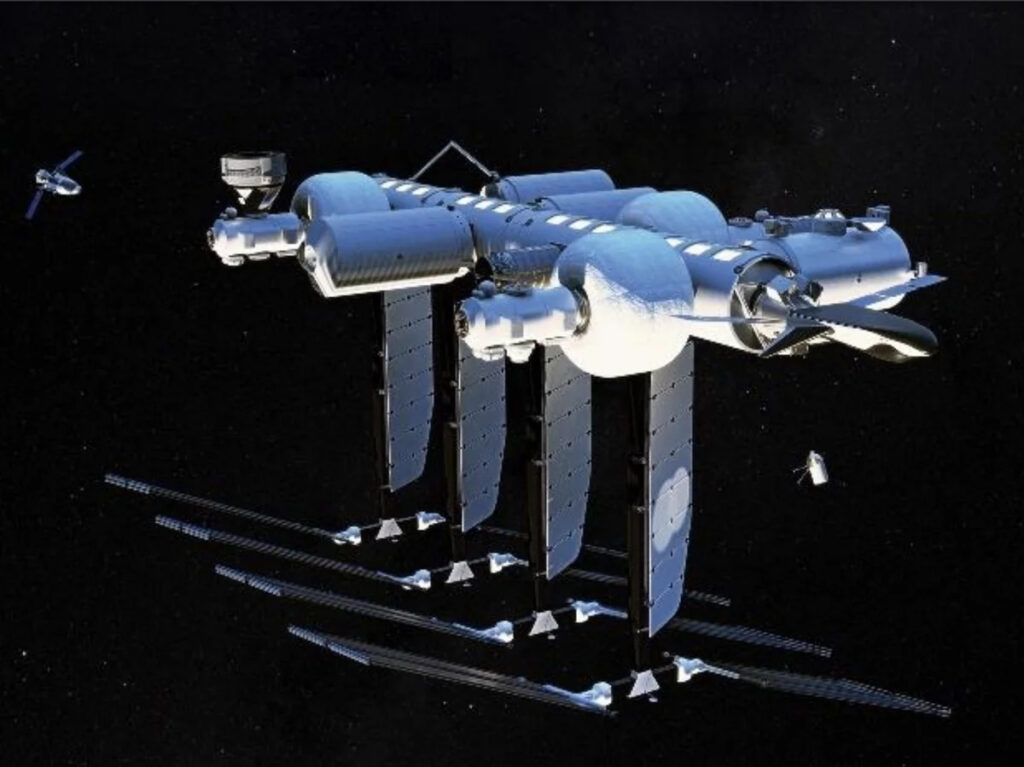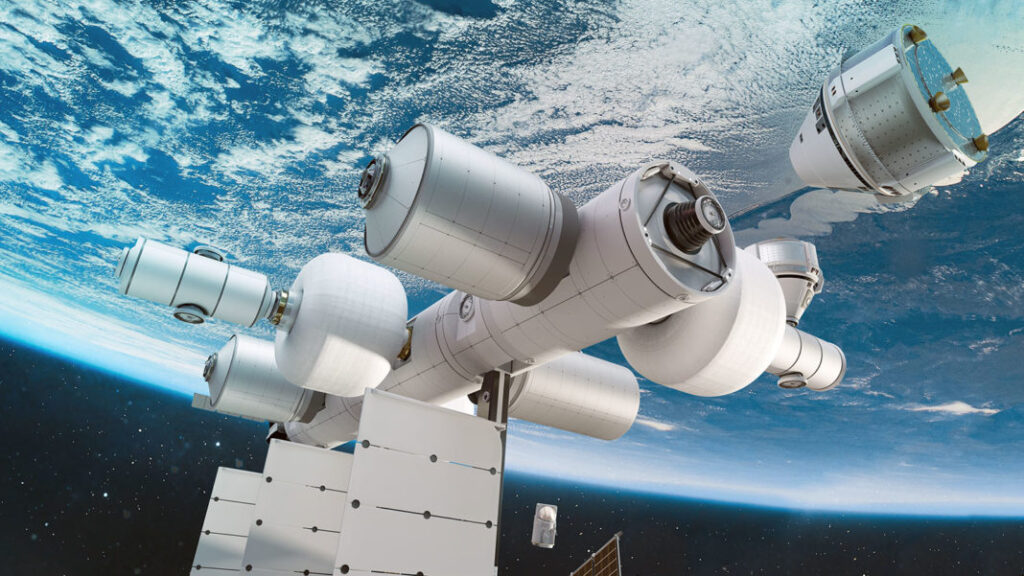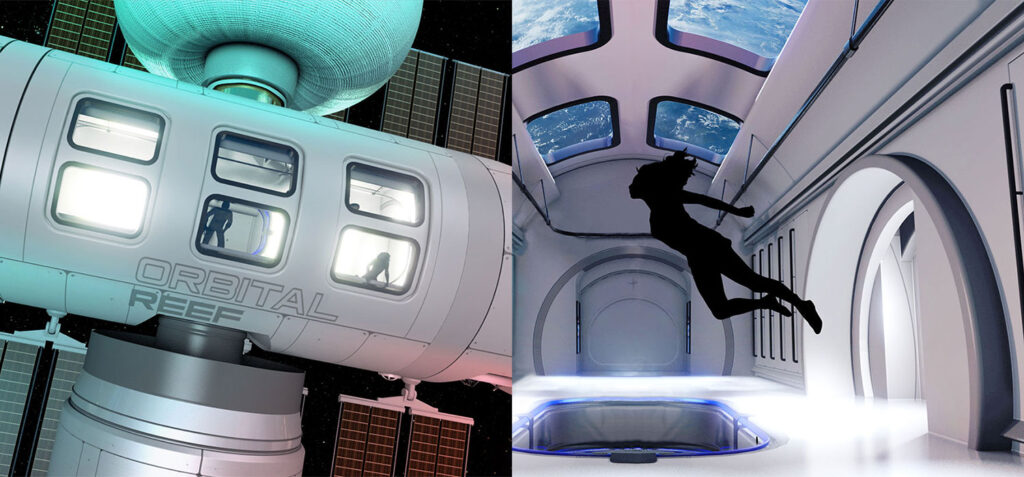Blue Origin Plans a Space-Orbiting Commercial Business Park
Jeff Bezos’ Blue Origin announced its plan to build Orbital Reef. It will be a commercial space station that will operate in low earth orbit, and if the program pushes through, it will be operational around 2050. The company says it will offer trips in orbit to scientists and tourists.
The interest in the commercial space station is high, gauging from the partners Blue Origin named, which will have their technology contributions—Genesis Engineering Solutions, Redwire Space, Sierra Space, and Boeing. Likewise, they will be joined by a consortium of scientists, with Arizona State University leading the team of scientists.
The plans for Orbital Reef
According to Blue Origin, Orbital Reef will run as a space-orbiting mixed-use business park that will cater to various international visitors. The plan is to have a human-centered space architecture, much like a tech-inspired luxury vacation destination. It will have world-class amenities and services, which Blue Origin says, will be safe, practical, and inspiring. While it will be open to tourism, the company plans to make the station available for various tasks and activities, including education, manufacturing, and research.
The smartly designed space station will have advanced logistics and automation, which will make the station cost-effective and less complex. The design will make it easier for new arrivals and traditional space operators to use the station. Moreover, it will feature an open system architecture, allowing nations or customers to link up and scale depending on the demand. Finally, the design is flexible, allowing the space station to add more amenities, utilities, vehicle ports, and module berths as needed.

Basics of the Orbital Reef program
Given that it is still too early to release the specifications of the space station, the company has already outlined the program’s basics.
Orbital Reef will have several modules. It can accommodate ten people at a time. Each partner has a responsibility to build it.
- Blue Origin will take charge of building the utility systems, the reusable heavy-lift New Glenn launch system, and large-diameter core modules.
- The Large Integrated Flexible Environment (LIFE) module will come from Sierra Space. This module is a node module. Sierra Space will also build a runway-landing Dream Chaser spaceplane. The plane, which can land on runways around the world, will carry cargo and crew.
- Boeing will be responsible for building a science module. The company will also be in charge of maintenance engineering and station operations. Boeing’s Starliner crew spacecraft will also be visiting Orbital Reef.
- Cargo operations and microgravity research and development will be the responsibility of Redwire Space.
- Genesis Engineering Solutions will build a Single Person Spacecraft. This unit will be used for space tourist excursions and outside work without needing to wear a spacesuit.
- Public outreach and research advisory services will be managed by the consortium of universities, with Arizona State University as the lead.
Future of space stations
The International Space Station is nearing its end. The permission to operate the ISS is only up to 2024, but with some funding, NASA can extend it until 2028. However, the reality is that the ISS will soon be decommissioned. The ISS is over 20 years old, and NASA spends around $4 billion annually to operate the station.
Early in 2021, NASA declared the Commercial Low Earth Orbit (LEO) Development program. The program aims to provide capital to companies engaged in space flights to develop private space stations in low earth orbit, which is seen as the start of a commercial space station era.
With commercial space stations in operation, NASA expects to save over $1 billion a year. At the same time, NASA engineers and astronauts can be users of a space station, instead of them being the infrastructure supporter and primary sponsors of a space station. So, on the other hand, NASA is going to focus more on its Artemis program.
As many people say, nothing is set in stone. Blue Origin is only one of the companies that are submitting proposals for commercial space stations. NASA has received proposals from about 12 companies. At the same time, Nanoracks, a space company, recently announced that it would develop a space station in partnership with Lockheed Martin and Voyager Space, the majority owner of Nanoracks.
A commercial space station will make it easier for NASA to transfer hardware from ISS to newer vehicles. They expect these companies to succeed and have already set aside a budget of $400 million they can award to four companies.

